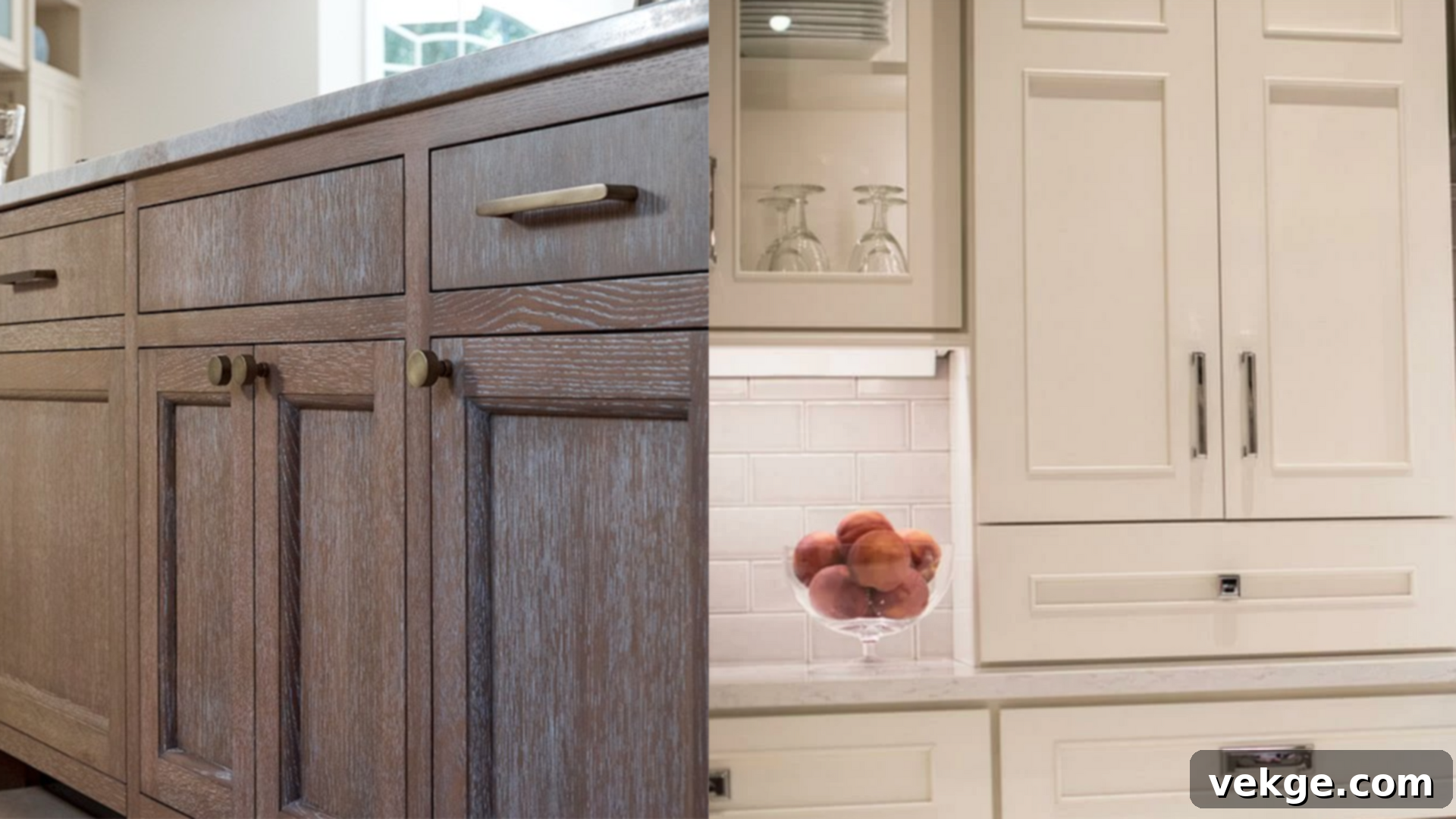Inset vs. Overlay Cabinets: The Ultimate Guide to Choosing Your Kitchen Style & Functionality
Embarking on a kitchen renovation or simply upgrading your cabinets involves a myriad of decisions, and perhaps one of the most foundational is choosing between inset and overlay cabinets. This isn’t merely an aesthetic preference; your selection profoundly impacts the look, functionality, storage capacity, and even the long-term maintenance of your kitchen. Understanding these two primary cabinet styles is crucial for creating a space that not only looks beautiful but also serves your daily needs efficiently.
This comprehensive guide delves into every aspect you need to consider. We will meticulously compare the visual appeal and day-to-day practicalities of each cabinet style, offering real-life examples to help you envision how these options could transform your home. Whether you’re a first-time renovator or assisting someone with their kitchen plans, you’ll gain the clarity to confidently choose the cabinet style that perfectly aligns with your space, budget, and lifestyle.
Understanding the Difference Between Inset and Overlay Cabinets
At the heart of distinguishing these cabinet styles lies the fundamental difference in how the cabinet doors and drawer fronts interact with the cabinet frame. This core distinction shapes both the visual aesthetic and the functional nuances, setting the overall tone for your entire kitchen design.
Inset Cabinets: Precision and Classic Elegance
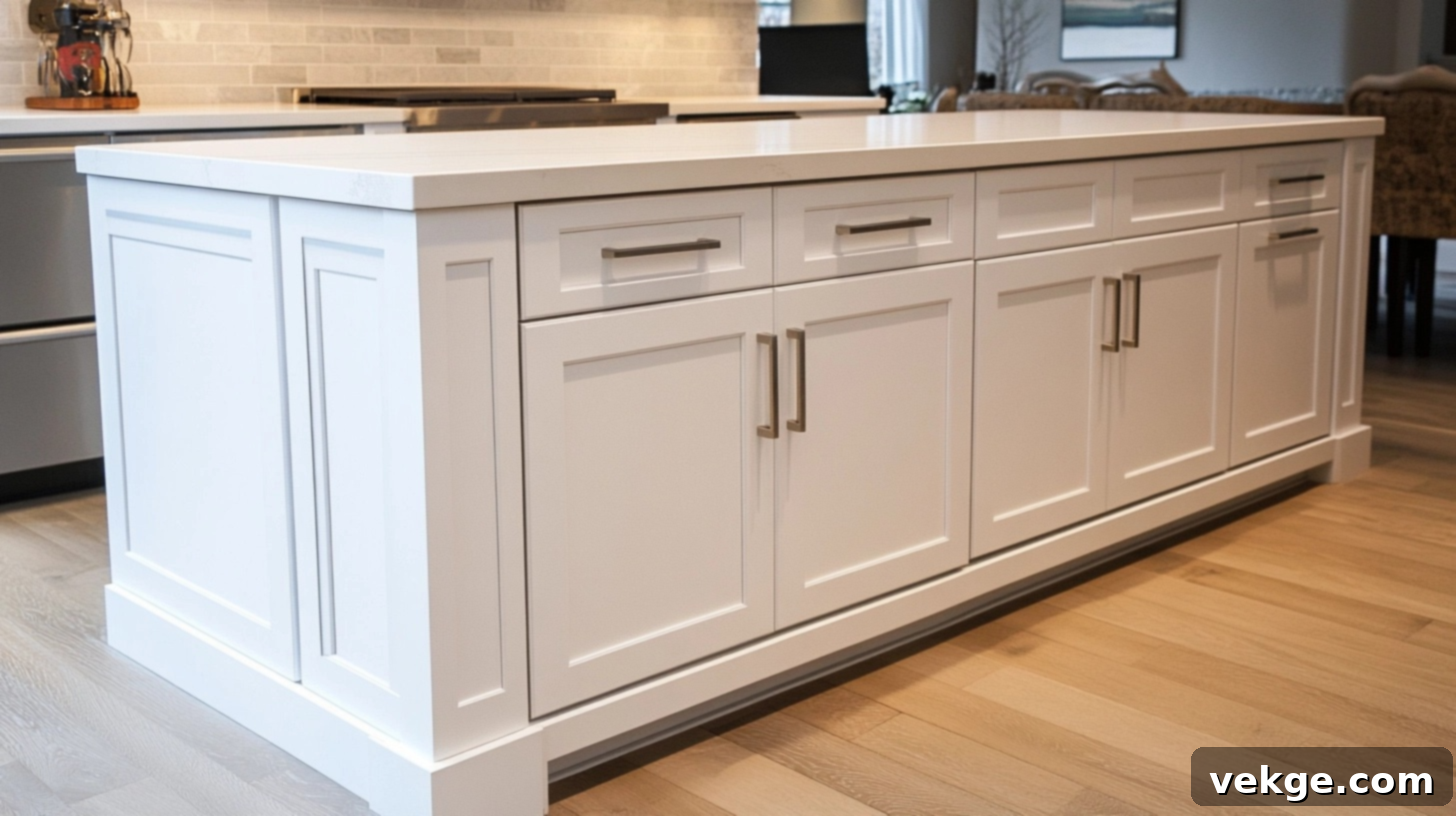
Inset cabinets are characterized by doors and drawers that fit precisely inside the cabinet frame. This design philosophy creates a remarkably smooth, flush surface where the cabinet frame is distinctly visible around each door and drawer panel. The result is a clean, architectural look that evokes a sense of timeless craftsmanship and traditional design.
The defining characteristic of inset cabinets is the meticulous precision required in their construction and installation. Each door and drawer front must be custom-fitted within its corresponding frame opening, demanding exact measurements and highly skilled carpentry. This level of detail ensures perfect alignment, allowing doors and drawers to open and close smoothly without any sticking or gaps. The visible reveal – the small, consistent gap around the door or drawer front – is a hallmark of this style, highlighting the cabinet’s structural integrity and the quality of its construction.
The clean lines and emphasis on the cabinet structure make the frame an integral part of the visual design. This approach not only lends a furniture-like quality to the cabinetry but also contributes to its often higher price point. The increased labor, material waste from precise cutting, and specialized hinges necessary for this flush fit are all factors that elevate the cost of inset cabinets compared to other options, reflecting their premium craftsmanship.
Overlay Cabinets: Versatility and Modern Efficiency
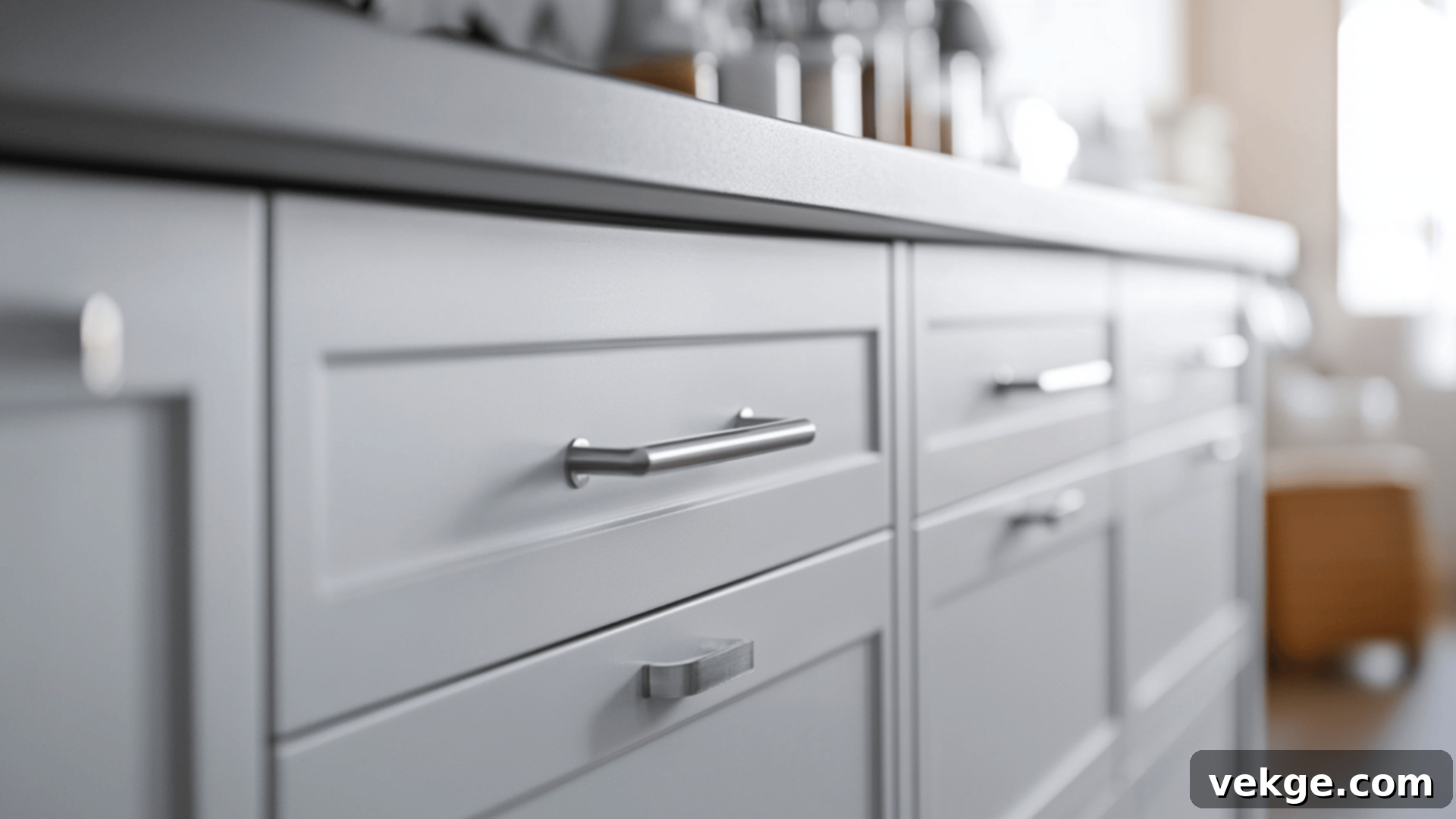
In contrast, overlay cabinets feature doors and drawers that rest on top of the cabinet’s face frame. Rather than fitting inside, these doors and drawers cover part or all of the frame structure, creating a distinctly different visual and functional effect. This style offers greater flexibility in terms of design and often proves more forgiving during manufacturing and installation.
Overlay cabinets are further categorized into two main types:
- Full Overlay: This modern style features doors and drawers that almost entirely cover the cabinet frame, leaving only minimal, consistent gaps between adjacent doors and drawers. The aesthetic is sleek and streamlined, often mimicking the look of frameless (European-style) cabinetry, which is popular in contemporary and minimalist kitchen designs.
- Partial Overlay (or Standard Overlay): This more traditional style covers only a portion of the cabinet frame, leaving more of the cabinet structure visible around the edges of the doors and drawers. This typically results in wider gaps between adjacent doors and drawers, exposing more of the face frame. Partial overlay is often found in more traditional or budget-friendly cabinetry.
The placement of doors and drawers on top of the frame provides several practical advantages for overlay cabinets. These include simpler construction processes, which translate to easier installation with more room for minor adjustments or imperfections. Additionally, by covering the frame, overlay cabinets typically offer more usable interior space, as the frame itself doesn’t obstruct the cabinet opening as much as it does with inset designs. This makes them a popular choice for maximizing storage and ease of use.
Pros and Cons: Inset vs. Overlay Cabinets
Both inset and overlay cabinets come with their unique set of strengths and weaknesses, which can significantly impact your kitchen’s overall function, style, and long-term satisfaction. Understanding these distinctions is key to making an informed decision that aligns with your priorities.
Here’s a detailed breakdown of how these two styles compare across the most crucial factors:
| Feature | Inset Cabinets | Overlay Cabinets |
|---|---|---|
| Appearance | Offers a sophisticated, flush, and seamless look with a clearly visible frame around each door and drawer. Evokes a classic, furniture-like quality. | Provides a smoother, more contemporary appearance with minimal frame visibility (full overlay) or a traditional, accessible look (partial overlay). Offers greater design versatility. |
| Cost | Significantly higher price point due to the complex, precision-demanding craftsmanship, specialized hardware, and increased labor involved in fitting each component. | Generally more budget-friendly. Less complex construction and installation requirements translate to lower manufacturing costs and broader availability. Partial overlay is typically the most economical option. |
| Storage | Slightly reduced interior storage space, as the door and drawer fronts fit within the frame, which effectively reduces the width and height of the cabinet opening. | Offers more usable interior storage space. Since doors and drawers sit on top of the frame, the entire cabinet opening is accessible, allowing for easier storage of larger items. |
| Maintenance | May require more frequent adjustments over time due to the natural expansion and contraction of wood with humidity changes, potentially causing doors to stick or gaps to become uneven. Precision hinges might be harder to adjust. | Less prone to visible issues from wood movement. Their construction allows for more tolerance, making minor adjustments simpler and less critical for overall function. Less likely to stick. |
| Installation | Complex and highly precise, demanding experienced installers to ensure perfect alignment and functionality. Small errors are very noticeable and can impact operation. | Easier and quicker to install. The design allows for more flexibility and forgiveness with minor measurement discrepancies, reducing labor time and potential installation costs. |
| Durability | Solid construction, but the flush fit can be susceptible to sticking or rubbing in environments with significant humidity fluctuations. Paint or finish chipping on edges can be a concern if doors consistently rub. | Generally offers trouble-free operation over time. The inherent design provides more clearance, reducing issues related to wood movement. Exposed door and drawer edges may show wear in high-traffic areas, but typically less prone to sticking. |
Ultimately, if your priority is a timeless, high-end aesthetic that speaks of fine craftsmanship and you’re prepared for the investment, inset cabinets might be the ideal choice. Conversely, if you prioritize maximizing storage, ease of maintenance, budget-friendliness, and design flexibility, overlay cabinets, particularly full overlay, could be the superior fit for your home.
Style & Look Considerations: Inset vs. Overlay Cabinets
Beyond the practical aspects, the choice between inset and overlay cabinets is a powerful design decision that significantly influences your kitchen’s overall mood, character, and stylistic adherence. Each style naturally complements different design aesthetics, allowing you to fine-tune your kitchen’s personality.
The Traditional Allure of Inset Cabinets
Inset cabinets inherently possess a classic, enduring quality that aligns beautifully with numerous traditional and vintage-inspired design styles. Their visible frame and perfectly flush doors create an undeniable sense of order, depth, and handcrafted artistry. This makes them particularly well-suited for:
- Classic Kitchens: With their detailed moldings, elegant hardware, and formal elements, classic kitchens find a natural partner in inset cabinetry, which echoes historical design principles.
- Vintage-Inspired Spaces: For those looking to recreate the charm of bygone eras, inset cabinets offer an authentic touch, reminiscent of antique furniture and built-in cabinetry from earlier centuries.
- Farmhouse Kitchens: Blending rustic comfort with refined visual interest, farmhouse designs often incorporate inset cabinets to emphasize their sturdy, handcrafted feel and traditional roots.
- Cottage Styles: Complementing warmth, intricate detailing, and a cozy atmosphere, inset cabinetry enhances the charming and curated look typical of cottage kitchens.
The way inset cabinets highlight the cabinet frame structure adds visual texture and architectural depth, making the cabinetry feel more like fine furniture than just utilitarian storage. The precise fit also creates subtle shadow lines that enhance the overall architectural details and give the space a refined, bespoke appearance. They often feature decorative hinges or beaded face frames, further elevating their traditional appeal.
The Dynamic Versatility of Overlay Cabinets
Overlay cabinets, especially the full overlay type, offer remarkable flexibility, making them adaptable across a broad spectrum of design styles. Their ability to minimize the visible frame allows for various looks, from ultra-modern to subtly transitional.
- Modern Kitchens: Full overlay cabinets are a staple in modern and minimalist designs. By covering most of the frame, they create clean, uninterrupted lines and smooth, unbroken surfaces that minimize visual clutter and emphasize sleekness.
- Transitional Spaces: For kitchens that seek a harmonious balance between contemporary and classic elements, full overlay cabinets provide a versatile base. They can be dressed up or down with hardware and finishes to lean modern or traditional.
- Even Traditional Kitchens: When paired with the right door styles (like Shaker) and classic hardware, full overlay cabinets can be seamlessly integrated into more traditional settings, offering a cleaner, updated take on a classic look.
Partial overlay cabinets, which expose more of the frame, tend to work better in more casual, rustic, or overtly traditional settings where a less formal, more homey feel is desired. Their slightly less formal appearance makes them adaptable to evolving style preferences, offering a timeless quality without being rigidly tied to one era.
Pairing Cabinet Types with Door Styles
The chosen door style works synergistically with the cabinet type to define your kitchen’s ultimate personality:
- Shaker Doors: With their iconic simple frame-and-panel design, Shaker doors are incredibly versatile and pair beautifully with both inset and overlay cabinets. Inset Shaker doors emphasize the clean, architectural lines and traditional craftsmanship, creating a refined, timeless look. Overlay Shaker doors, particularly full overlay, can lean more contemporary or offer a slightly more relaxed and accessible version of this classic style.
- Slab Doors: Characterized by flat, unadorned panels, slab doors are most at home in overlay construction, especially full overlay. This combination creates the smooth, unbroken surfaces and minimalist aesthetic highly valued in contemporary, Scandinavian, and minimalist design. While less common, inset slab doors can make a unique, architectural statement, often requiring specific design considerations to avoid appearing too stark.
- Beadboard Doors: Featuring vertically grooved panels, beadboard doors evoke a charming, cottage, or country aesthetic. They connect exceptionally well with inset construction, particularly in country and cottage designs, where the visible frame and precise fit highlight a handcrafted, quaint quality. In overlay form, beadboard doors maintain their charm but take on a slightly more casual and less formal feeling.
- Raised Panel Doors: These traditional doors, with their central panel elevated from the surrounding frame, often complement both partial overlay and inset cabinets in more ornate or formal traditional kitchens.
The hardware you select—from simple, understated knobs to bold, statement pulls—will further refine and personalize the character of your chosen cabinet style, adding the essential final touch to your kitchen’s visual narrative.
Storage and Space Considerations
In the intricate planning of your kitchen, seemingly minor details of cabinet construction can have a significant impact on daily usability. The fundamental difference in how doors and drawers attach to the cabinet frame directly influences the amount of internal storage available and the ease with which you can access your stored items.
Storage Capacity Differences: Every Inch Counts
One of the most practical distinctions between the two styles is their impact on internal storage capacity. Generally, overlay cabinets tend to provide more usable interior storage space than their inset counterparts. This advantage stems from the design: since overlay doors and drawers sit on top of the cabinet frame rather than within it, they don’t consume any of the precious interior opening space.
While an extra half-inch or inch per cabinet might seem negligible in isolation, when aggregated across an entire kitchen, this additional space can be substantial. It translates to more room for larger dinner plates, bulkier cookware like Dutch ovens, oversized serving dishes, or a greater quantity of pantry staples. For kitchens where maximizing storage is a top priority—be it a compact galley kitchen or a bustling family hub—the subtle gain in capacity offered by overlay cabinets can be a decisive factor.
Frame Interference in Inset Cabinets: Accessibility Challenges
Conversely, the precise frame structure that defines the elegant look of inset cabinets also creates a small, permanent lip or obstruction around the perimeter of each cabinet opening. This internal frame projection, while essential for the flush appearance, can present challenges when storing or retrieving items.
Consider trying to slide a wide cutting board, a large baking sheet, or a bulky stand mixer into an inset cabinet. The internal frame can snag these items, requiring you to angle them carefully or lift them over the lip, making access slightly less fluid. This effect is particularly noticeable in lower cabinets and drawers, where the frame can limit the effective width and height of the opening. For those who frequently use oversized cookware or value unhindered access to their kitchen tools, this design aspect of inset cabinets is a crucial consideration that warrants careful thought before finalizing your choice.
Maintenance and Durability: Long-Term Considerations
The longevity and enduring appeal of your kitchen cabinets are paramount, and each style presents distinct long-term considerations regarding how they hold up over time and their specific maintenance needs.
How They Hold Up Over Time
- Inset Cabinets: The precision fit that defines inset cabinetry is also its most vulnerable point over time, especially in environments with fluctuating humidity. Wood is a natural material that expands when humidity is high and contracts when it’s low. This natural movement can cause the perfectly aligned doors and frames of inset cabinets to shift, leading to visible gaps becoming uneven, or doors potentially sticking or rubbing against the frame. While quality construction and proper sealing can mitigate some of these issues, minor adjustments may be necessary over the years to maintain their pristine flush appearance.
- Overlay Cabinets: These cabinets generally exhibit greater tolerance for natural wood movement. Since the doors and drawers sit on top of the frame with a slight overlap, minor expansion or contraction is less likely to cause noticeable sticking or significant visual discrepancies. However, overlay cabinets can show wear in different ways. The exposed edges of overlay doors and drawers, particularly those in high-traffic zones like around the sink, dishwasher, or stove, are more prone to minor finish damage, chipping, or scuffing from frequent handling and accidental bumps.
Cleaning and Adjustment Needs
- Overlay Cabinets: These typically offer simpler maintenance when it comes to adjustments. The standard hinges used for overlay doors are often easily tweaked with a screwdriver, allowing homeowners to quickly correct minor sagging or misalignment that naturally occurs with usage. Their design allows for more forgiveness, making them easier to live with for everyday wear and tear. Cleaning is generally straightforward, though the visible door and drawer edges may accumulate fingerprints and grime that require regular wiping.
- Inset Cabinets: Maintaining the impeccable flush appearance of inset cabinets often demands more precise and sometimes more frequent adjustments. The specialized hinges and exact alignment needed mean that significant shifts might require the expertise of a professional cabinet maker or installer. While the flat surfaces are easy to wipe down, the small reveals or gaps around the doors can become dust traps, requiring diligent cleaning with a brush or vacuum attachment to keep them pristine.
Both styles benefit from regular cleaning and care, but understanding their inherent characteristics helps prepare you for the specific long-term maintenance requirements of each, ensuring your kitchen remains beautiful and functional for years to come.
Which Cabinet Style Is Right for Your Kitchen?
The optimal cabinet style for your kitchen hinges entirely on your specific needs, aesthetic preferences, and practical priorities. This comparison illuminates which cabinet type excels in various kitchen scenarios, helping you make a tailored decision.
| Kitchen Type / Scenario | Best Cabinet Choice | Why It Works |
|---|---|---|
| High-Traffic Family Kitchens | Overlay Cabinets (Full or Partial) |
More resilient to daily wear and tear from constant use, less prone to sticking. Offers superior interior storage, crucial for large families and diverse kitchen needs. Easier to adjust when doors are accidentally knocked out of alignment, requiring less professional intervention. Less affected by humidity changes, ensuring consistent operation in a busy environment. |
| Luxury, Showcase Kitchens | Inset Cabinets |
Unmistakably displays fine craftsmanship, meticulous attention to detail, and a high-end, custom look. Visible frame elements create architectural depth and a sophisticated, furniture-like aesthetic. Pairs seamlessly with other high-end finishes, premium appliances, and custom details, elevating the overall luxury feel. Offers a classic, enduring appeal that transcends trends and holds its value. |
| Small Spaces / Minimalist Design | Full Overlay Cabinets |
Maximizes every inch of interior storage, crucial in limited space where functionality is paramount. Creates a cleaner, less busy visual flow with minimal frame gaps, making the space feel more open and expansive. A continuous, streamlined look helps small kitchens appear larger and less cluttered. Aligns perfectly with minimalist design principles, prioritizing simplicity and functionality. |
| Budget-Conscious Remodels | Overlay Cabinets (Partial Overlay for Best Value) |
Significantly lower cost than inset options due to simpler construction and installation processes. Partial overlay offers the most economical choice without sacrificing essential functionality or a refreshed appearance. Reduced labor costs for manufacturing and installation directly impact the overall budget. Allows more of the budget to be allocated to other important kitchen elements like countertops, appliances, or lighting. |
| Transitional Style Kitchens | Full Overlay Cabinets |
Their sleekness lends itself to modern elements, while traditional door styles (like Shaker) can add classic flair. Provides a clean backdrop that can be accessorized with varied hardware and finishes to achieve the desired balance between old and new. Offers the versatility needed to bridge contemporary and traditional aesthetics seamlessly. |
The right decision will ultimately be a thoughtful balance of your practical requirements, deeply held design preferences, and prevailing budget constraints. Reflect on which factors are most critical for your daily kitchen use and long-term satisfaction.
Real-Life Kitchen Scenarios: Inset vs. Overlay Cabinet Options
Visualizing how different cabinet choices perform in actual home settings can be incredibly helpful in determining which option will best suit your unique space. Let’s explore some common kitchen situations and the cabinet solutions that prove most effective in each.
1. Open-Concept Modern Kitchen in a New Build
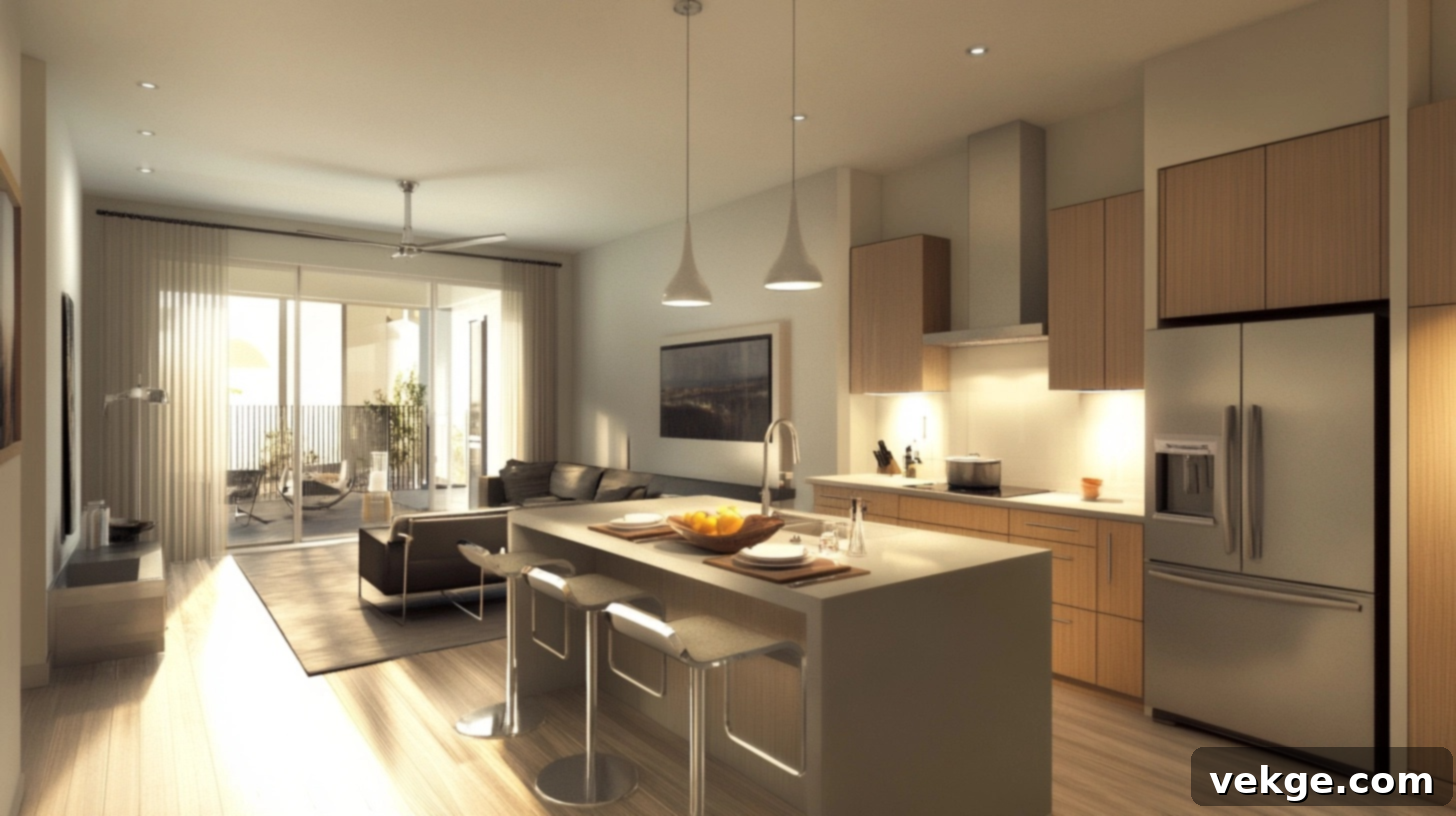
Best Option: Full overlay cabinets
In modern, open-concept spaces, the goal is often to create a seamless, expansive feel. Full overlay cabinets excel here by producing clean, unbroken lines and a minimalist aesthetic. Their minimal gaps between doors and drawers form a sleek, continuous surface that doesn’t visually compete with the overall architectural design of the home. This style provides maximum storage efficiency and simpler maintenance, which are ideal for the dynamic, busy households that typically gravitate towards open layouts. They blend effortlessly with other contemporary finishes, creating a cohesive and sophisticated living environment.
2. Small Galley Kitchen with Minimal Storage Needs
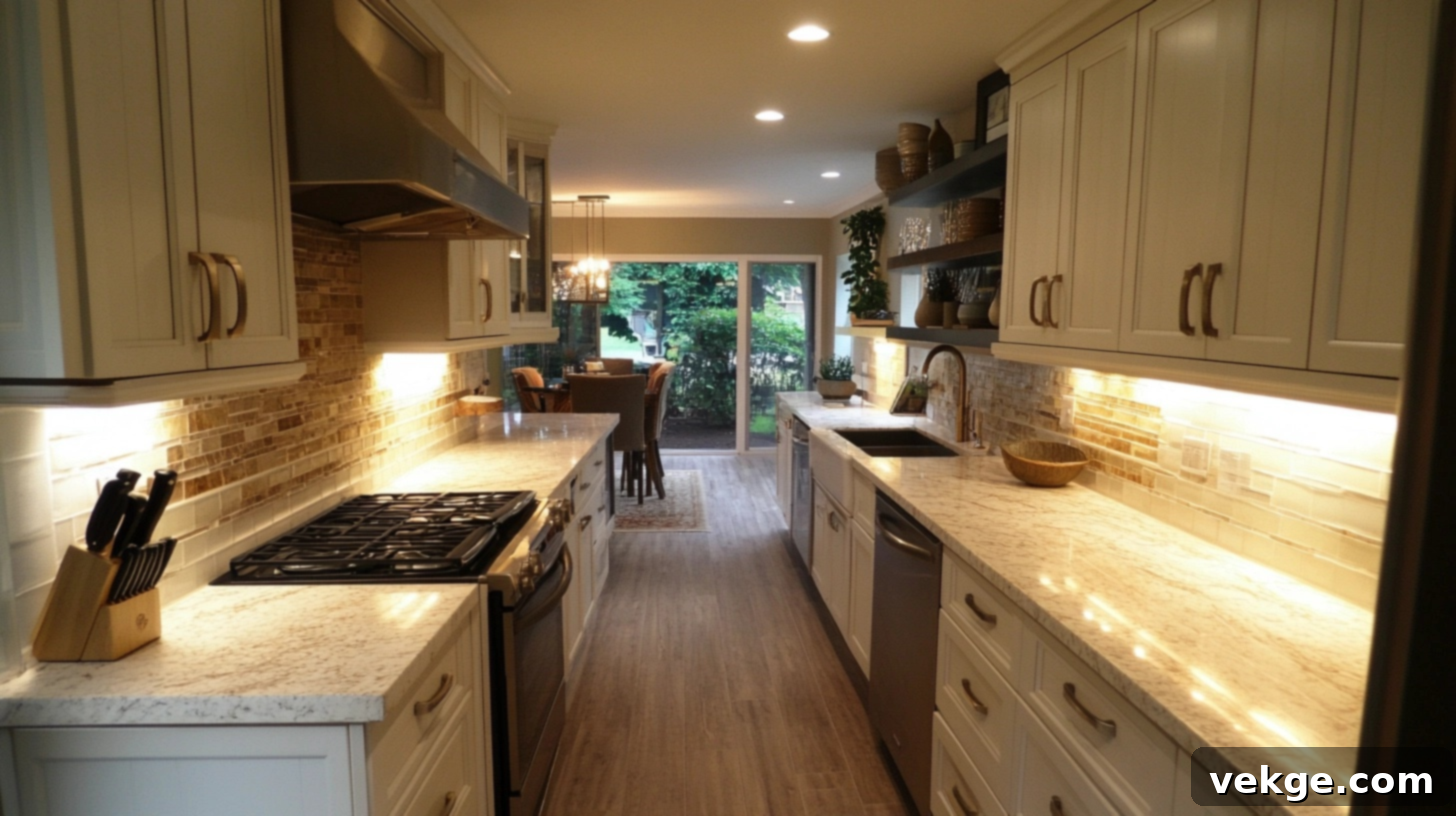
Best Option: Full overlay cabinets
In tight spaces like galley kitchens, where every inch is critical, full overlay cabinets are invaluable. They maximize interior storage capacity by allowing full access to the cabinet’s opening, making it easier to store and retrieve items without obstruction. Moreover, their streamlined appearance contributes to a less cluttered visual effect. The absence of prominent frames and minimal gaps creates a continuous, unbroken facade that helps the small space feel less cramped and more open, airy, and organized. This visual continuity is key to enhancing the perception of space in compact layouts.
3. Vintage Home Restoration
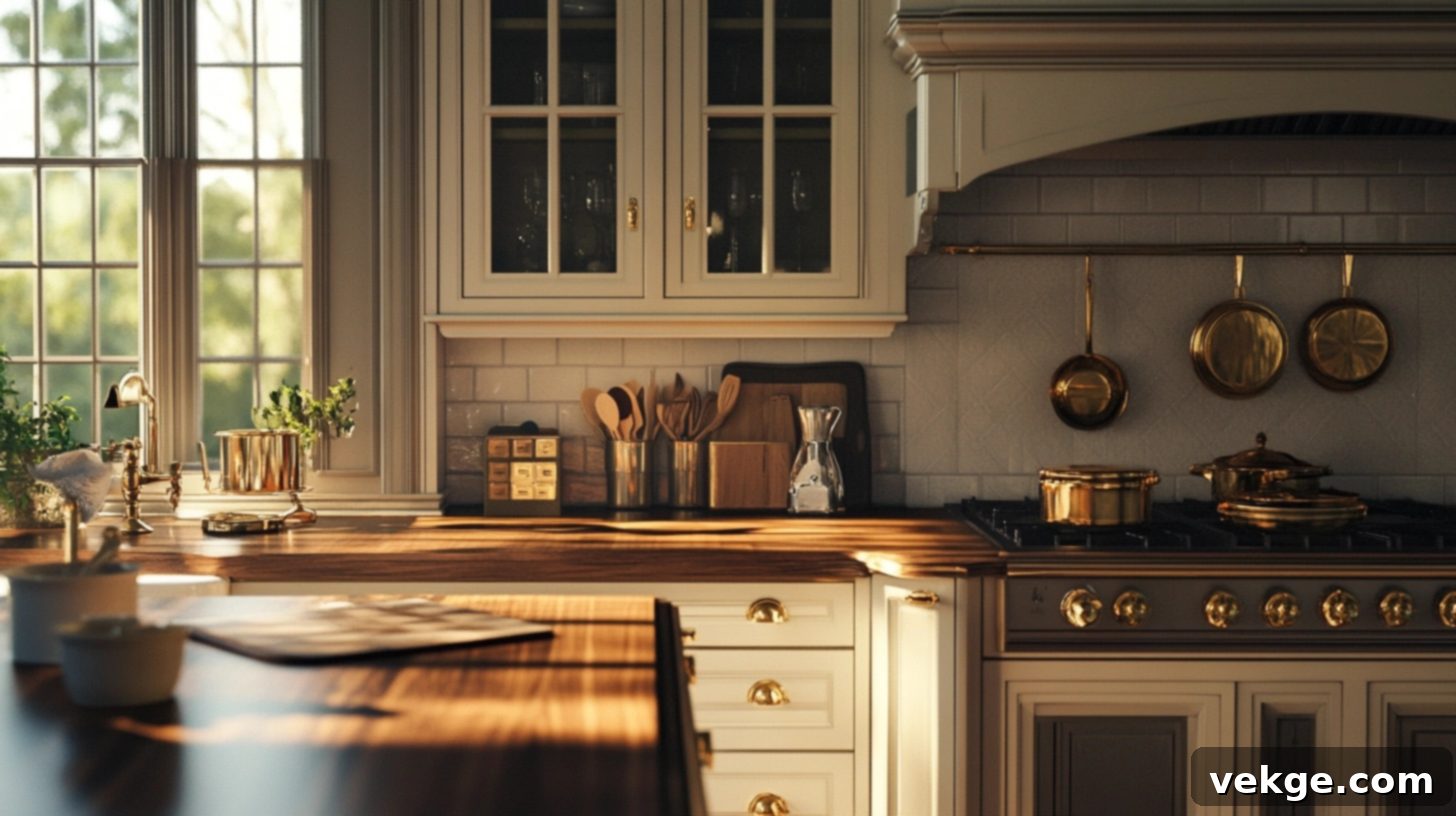
Best Option: Inset cabinets
For homes brimming with historical character, such as Victorians, Craftsman, or Colonial-style residences, inset cabinets offer unparalleled authenticity. Their visible frame and precise, flush fit perfectly reflect the traditional craftsmanship and joinery techniques prevalent in earlier building periods. Choosing inset cabinets helps the kitchen feel genuinely true to the home’s heritage, rather than a modern imposition. Incorporating period-specific details like beaded frames, decorative hinges, or raised panels can further enhance the historical accuracy, recreating the charm and elegance of original built-in cabinetry.
4. Budget Kitchen Facelift on a Mid-range Property
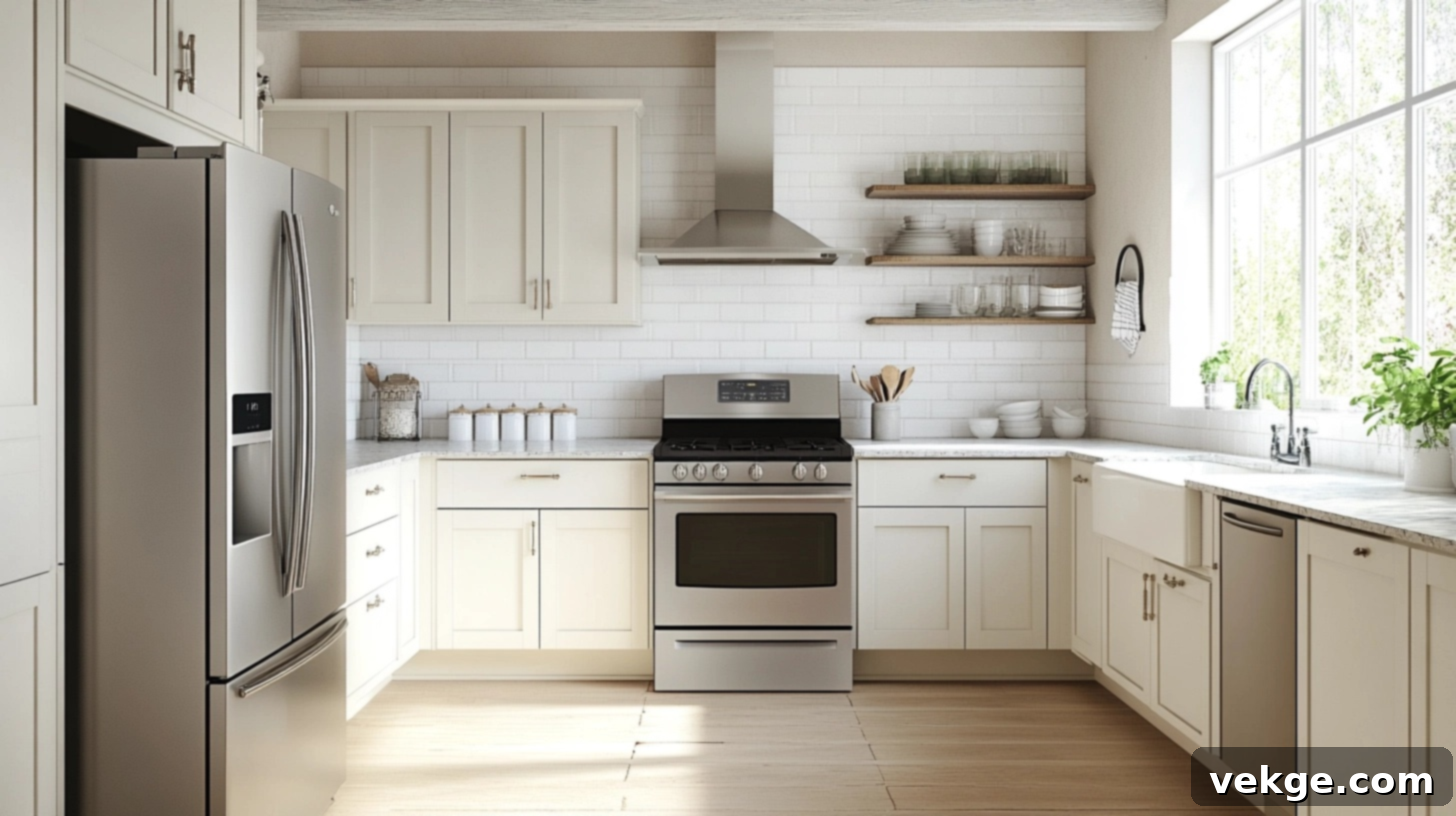
Best Option: Partial overlay cabinets
When undertaking a kitchen facelift with an eye on both cost-effectiveness and resale value, partial overlay cabinets strike an excellent balance. They are significantly more affordable than full overlay or inset options, making them an ideal choice for budget-conscious remodels. While delivering a fresh, updated look, their traditional appearance appeals to a broad range of potential buyers, offering a solid, well-maintained impression without the premium price tag of more custom options. This style allows homeowners to achieve a noticeable upgrade without overspending, providing excellent value for mid-range properties.
Conclusion: Making Your Cabinet Choice with Confidence
The decision between inset and overlay cabinets is undoubtedly one of the most impactful choices you’ll make for your kitchen renovation. It extends far beyond mere aesthetics, directly influencing the daily functionality, long-term durability, and overall feel of your culinary space. Each style presents a unique set of benefits and considerations that are worth careful deliberation.
To recap, overlay cabinets generally offer a compelling package of increased storage capacity, simpler maintenance, and a more budget-friendly price point, with full overlay providing a sleek, modern look and partial overlay offering traditional charm at an accessible cost. Inset cabinets, on the other hand, deliver an unmatched classic, custom, and built-in aesthetic that exudes fine craftsmanship, albeit with a higher investment and potentially more specific upkeep requirements. Your ultimate choice should harmonize your personal style preferences, practical functional needs, and financial constraints.
We strongly recommend experiencing both cabinet styles in person whenever possible. Visit showrooms, open and close doors, examine the details, and truly consider which feel resonates most with your vision for your home. This tactile experience can often provide the final clarity needed for such an important decision.
For more detailed insights, design inspirations, and practical comparisons to simplify your next home improvement project, explore other helpful guides and blogs on our website.
Frequently Asked Questions About Inset vs. Overlay Cabinets
Are inset cabinets worth the extra cost?
The value of inset cabinets’ extra cost is subjective. They are certainly worth it if you highly prioritize fine craftsmanship, a bespoke classic aesthetic, and a furniture-like appearance that adds significant architectural character to your kitchen. However, if your primary concerns are maximizing storage space, adhering to a strict budget, or preferring a more contemporary, low-maintenance design, then overlay cabinets may offer better value for your specific needs.
What’s the main difference between full and partial overlay cabinets?
The core difference lies in how much of the cabinet’s face frame is visible. Full overlay doors and drawers cover almost the entire cabinet frame, leaving only minimal, consistent gaps between adjacent panels, creating a sleek and modern look. Partial overlay doors and drawers cover only a portion of the frame, leaving more of the cabinet frame exposed around the edges and resulting in wider gaps between panels, which typically gives a more traditional or economical appearance.
Can you mix inset and overlay cabinets in the same kitchen design?
Yes, mixing inset and overlay cabinets is possible, but it requires careful design planning to ensure a cohesive look. For example, you might use elegant inset cabinets for upper display cabinets or a kitchen island to create a furniture-like focal point, while employing more practical full overlay cabinets for lower cabinets or pantry areas to maximize storage and ease of use. The key is to define separate zones or choose distinct applications for each style so the blend appears intentional and harmonious rather than mismatched.
Do inset cabinets offer less storage than overlay cabinets?
Yes, inset cabinets generally offer slightly less usable interior storage space compared to overlay cabinets. Because the doors and drawer fronts fit *inside* the cabinet frame, the frame itself creates a small lip around the opening that slightly reduces the effective width and height of the cabinet’s interior. While this difference is often minor for single items, it can add up across an entire kitchen, potentially affecting the storage of larger or bulkier items.
Are overlay cabinets more durable than inset cabinets?
Both styles are durable, but they show wear differently. Overlay cabinets, particularly full overlay, can sometimes be more forgiving of minor wood movement due to humidity and are less prone to doors sticking. However, their exposed door and drawer edges may be more susceptible to chipping or scuffing from frequent contact. Inset cabinets, with their precise fit, can be more sensitive to humidity-induced sticking, but their construction often uses heavier frames, contributing to overall solidity. Durability largely depends on the quality of materials and construction for both types.
